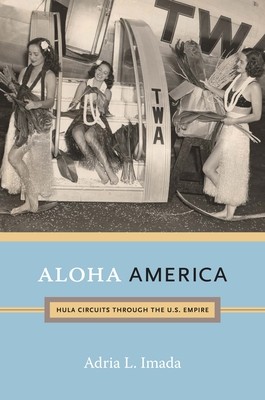
- We will send in 10–14 business days.
- Author: Adria L Imada
- Publisher: Duke University Press
- ISBN-10: 0822352079
- ISBN-13: 9780822352075
- Format: 15.5 x 23.4 x 2.5 cm, softcover
- Language: English
- SAVE -10% with code: EXTRA
Reviews
Description
Winner, 2013 Best First Book in Women's, Gender, and/or Sexuality History by the Berkshire Conference of Women Historians
Winner, 2013 Lawrence W. Levine Award, Organization of American Historians
Winner, 2013 Congress on Research in Dance Outstanding Publication Award
At vaudeville theaters, international expositions, commercial nightclubs, and military bases, Hawaiian women acted as ambassadors of aloha, enabling Americans to imagine Hawai'i as feminine and benign, and the relation between colonizer and colonized as mutually desired. By the 1930s, Hawaiian culture, particularly its music and hula, had enormous promotional value. In the 1940s, thousands of U.S. soldiers and military personnel in Hawai'i were entertained by hula performances, many of which were filmed by military photographers. Yet, as Adria L. Imada shows, Hawaiians also used hula as a means of cultural survival and countercolonial political praxis. In Aloha America, Imada focuses on the years between the 1890s and the 1960s, examining little-known performances and films before turning to the present-day reappropriation of hula by the Hawaiian self-determination movement.
EXTRA 10 % discount with code: EXTRA
The promotion ends in 10d.05:08:05
The discount code is valid when purchasing from 10 €. Discounts do not stack.
- Author: Adria L Imada
- Publisher: Duke University Press
- ISBN-10: 0822352079
- ISBN-13: 9780822352075
- Format: 15.5 x 23.4 x 2.5 cm, softcover
- Language: English English
Winner, 2013 Best First Book in Women's, Gender, and/or Sexuality History by the Berkshire Conference of Women Historians
Winner, 2013 Lawrence W. Levine Award, Organization of American Historians
Winner, 2013 Congress on Research in Dance Outstanding Publication Award
At vaudeville theaters, international expositions, commercial nightclubs, and military bases, Hawaiian women acted as ambassadors of aloha, enabling Americans to imagine Hawai'i as feminine and benign, and the relation between colonizer and colonized as mutually desired. By the 1930s, Hawaiian culture, particularly its music and hula, had enormous promotional value. In the 1940s, thousands of U.S. soldiers and military personnel in Hawai'i were entertained by hula performances, many of which were filmed by military photographers. Yet, as Adria L. Imada shows, Hawaiians also used hula as a means of cultural survival and countercolonial political praxis. In Aloha America, Imada focuses on the years between the 1890s and the 1960s, examining little-known performances and films before turning to the present-day reappropriation of hula by the Hawaiian self-determination movement.


Reviews